Where is the Blue Mountain planted? introduction to the flavor characteristics of Jamaica Blue Mountain No.1 Coffee
Blue Mountain Coffee has always been remembered for its mellow taste, because it doesn't taste like coffee, but like a cup of milk tea. Why do you say that? Because coffee gives people the impression that it is either sour or bitter, and Blue Mountain Coffee has the characteristics of all good coffee, not only full-bodied and mellow, but also because of the perfect combination of sweet, sour and bitter coffee, there is no bitterness at all. only moderate and perfect sour taste. In the front street, washed Blue Mountain coffee has always been the most popular. Blue Mountain coffee is usually drunk alone, but because of its low output, it is extremely expensive. The flavor of high-quality fresh Blue Mountain Coffee is very long-lasting. No wonder drinkers say that Blue Mountain Coffee is so memorable.

Although it is easier to buy authentic Blue Mountain Coffee than before, there are still a lot of Blue Mountain Coffee on the market that are not real Blue Mountain Coffee. There are many kinds of Blue Mountain coffee, including Jamaican Blue Mountain Coffee, Jamaican Alpine Coffee, Jamaican Coffee. Only the Blue Mountain Coffee grown in the Jamaican Blue Mountains is the real Jamaican Blue Mountain Coffee.
Blue Mountain Coffee comes from the Blue Mountain Mountains of Jamaica, which is located in the eastern part of the island of Jamaica, hence its name because the mountain is surrounded by the Caribbean Sea, when the sun shines directly on the blue sea on clear days, and the peaks reflect the bright blue light of the sea. However, not all coffee trees growing in the whole Blue Mountain area can produce high-quality blue mountain coffee beans. CIB of Jamaica Coffee Industry Bureau has established strict production standards. Only Arabica coffee growing 910m ~ 1700 m can be called Jamaican Blue Mountain Coffee Jamaica Blue Mountain Coffee. The remaining low altitude coffee is listed as Jamaican alpine coffee and Jamaican preferred coffee.
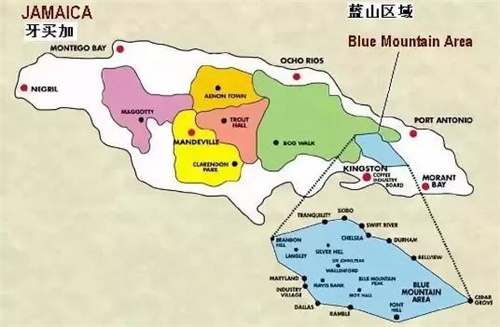
The air here is fresh and unpolluted, the climate is humid, the temperature is about 27 degrees, and it is cloudy all the year round, which can shade the coffee trees. Coffee tree full minister on the rugged hillside, the picking process is very difficult, non-local skilled female workers simply can not do it. It is very important to choose the right ripe coffee beans when picking. Immature or ripe coffee will affect the quality of the coffee. Coupled with the fertile volcanic soil, it has created ultra-high quality blue mountain coffee beans.
There are several kinds of Blue Mountain Coffee on the market:
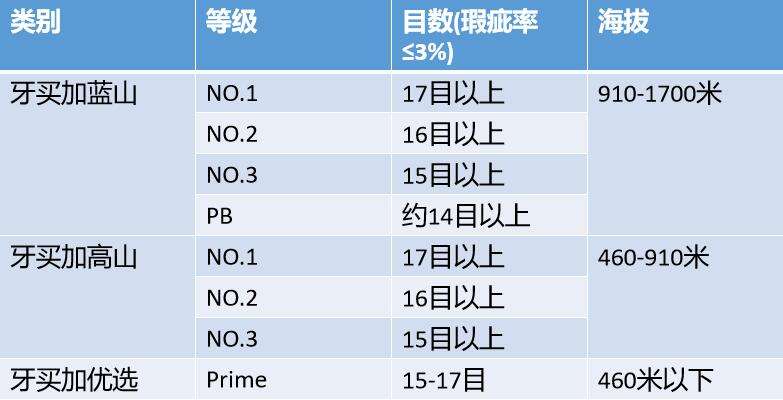
It is precisely because the output of Blue Mountain coffee is low and the price is high, so there will be a lot of coffee marked Blue Mountain Coffee on the market. According to the elevation of coffee cultivation, Jamaica divides the coffee grown in the Blue Mountains into Jamaican Blue Mountain Coffee, Jamaican Alpine Coffee and Jamaican Coffee. Only Arabica Tippica coffee from 910-1700 meters above sea level, including St. Andrews (St.Andrew), St. Mary (St.Mary), St. Thomas (St.Thomas) and Portland (Portland) can be called Jamaican Blue Mountain Coffee (Jamaica Blue Mountain). Those below 910m above sea level are called Jamaican Alpine Coffee, while those below 460m are the preferred coffee for Jamaica. Among them, Jamaica Blue Mountain is divided into four grades, the quality from high to low is: NO.1, NO.2, NO.3 and PB,PB (peaberry) are round beans. The basic standard of Lanshan No. 1 coffee raw beans from Qianjie is beans with more than 17 mesh, defect rate less than 2%, moisture content about 13%, etc., which looks like full grains, uniform size and blue-green raw beans. The flavor is both sour, sweet, bitter, fragrant and mellow.
Introduction of Blue Mountain Coffee producing area
There are four major producing areas of Jamaican Blue Mountain Coffee: St. Mary, St. Thomas, St. Andrew, and Portland. The total area of the four producing areas is about 6000 hectares, accounting for 1 hectare of the entire Blue Mountain growing area, while another 1200 hectares of land is used for the cultivation of Jamaican alpine coffee and Jamaican preferred coffee. In recent years, less than 15% of coffee beans produced in Jamaica can be labeled Blue Mountain Coffee.
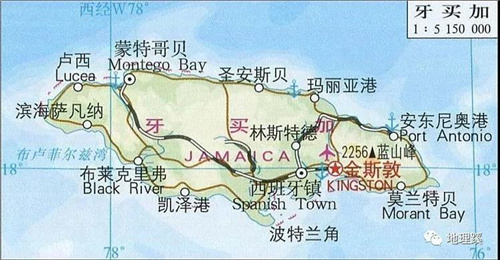
Today, St. Andrew is still one of the three major producing areas of Blue Mountain Coffee, while the other two are Portland and St.Thomas. Some small estates also grow Blue Mountain Coffee, such as WallenfordEstate, SilverHillEstate and AtlantaEstate in J.Martinez. Even the largest landowners in the region are small-scale growers by international standards, many of whom are small landowners whose families have been working on the land for two centuries.
At present, there are six marks that can represent the origin of Blue Mountain Coffee, such as Memphis River Embankment Central Factory (M.B.C.E), Blue Mountain Coffee Cooperative Factory (M.H.C.C.T.), Portland Blue Mountain Coffee Cooperative Factory (P.X.X.S.H.), Coffee Industry Association (Wallenford), Coffee Industry Association (St. John's Peak) and J.A.S (Lanli). There are also some manor grades that are marked on the barrel.
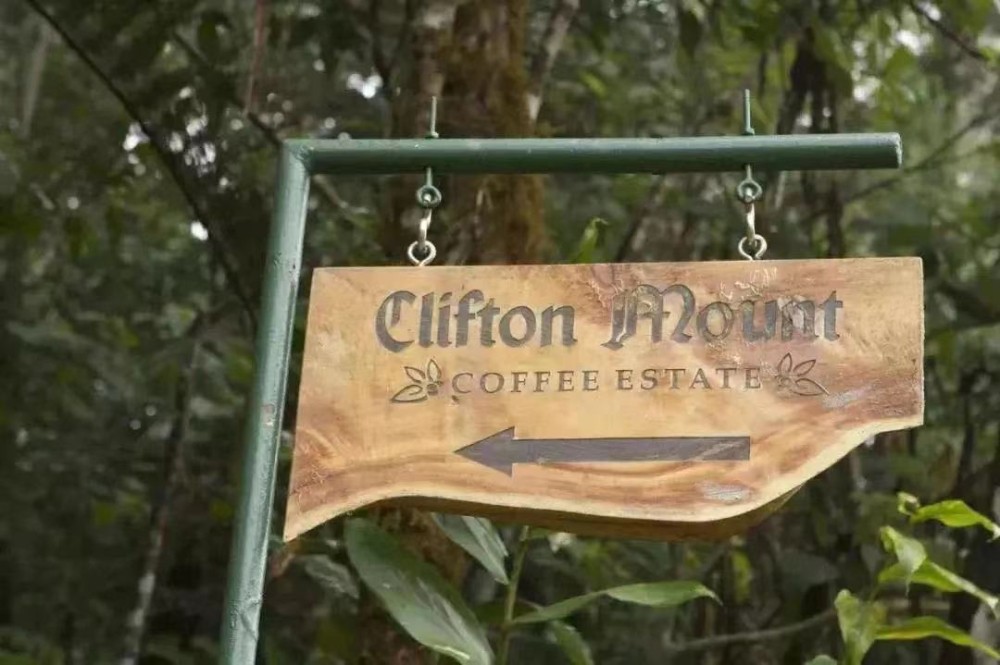
The Blue Mountain No.1 Coffee introduced by Qianjie Coffee comes from Clifton Farm, the largest estate in the area, which is also small-scale cultivation by international standards, many of which are small landowners whose families have been working on the land for two centuries. By comparison, Qianjie Coffee thinks that Blue Mountain one of Clifton Farm performs very well and can be used as one of the outstanding representatives of Blue Mountain Coffee.
Clifton Manor
Clifton Manor, the oldest estate in Jamaica, has grown coffee since the mid-18th century and has grown into one of the largest estates in Jamaica in 1900. In 1978, the Sharp family took over the management of Clifton Manor, improving the coffee growing environment in the estate and introducing advanced equipment to establish BMCP, currently the largest coffee processing plant in Jamaica.
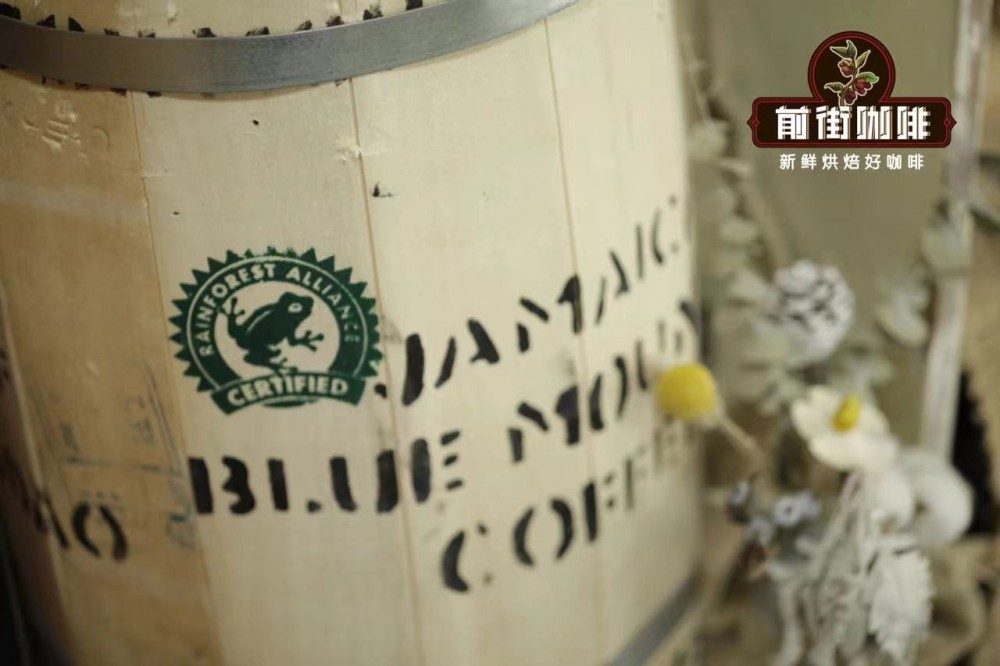
Clifton Manor is one of the Tropical Rain Forest Alliance certified estates. Beans in the whole coffee production process adhere to the concept of sustainable environmental protection, minimize all kinds of pollution, and the water used in the treatment plant is recycled. When the blue mountain coffee beans are received in the current street, the green rainforest water frog logo is printed on the outside of the log barrel, which means that of all the coffee raw beans, only the blue mountain coffee beans are filled in wooden buckets, and there is a green rainforest water frog logo on the outside of the bucket.
Blue Mountain Coffee varieties
Jamaica Blue Mountain Coffee is an ancient variety of iron pickup, which has the longest history. The reason why the iron pickup is no longer widely planted is that it has a weak physique, poor disease resistance and very little yield per plant. It has been more than 200 years since iron pickup was introduced to Blue Mountain in the 18th century, and the iron pickup of Blue Mountain has also adapted to the local island type and evolved a better ability of disease resistance, among which the coffee berry disease will be much stronger than the general tin card.
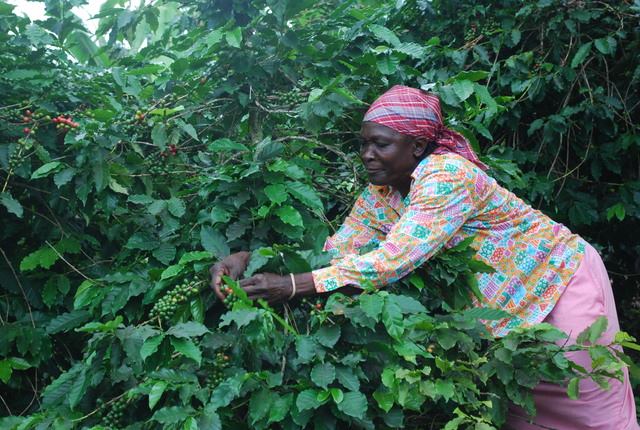
The leaf tip of the iron pickup species has a feature, which is red copper, which is called red top coffee. Coffee tree opposite leaves are long oval, smooth leaves, the end of the branch is very long, few branches, and the flowers are white, open at the base of the petiole connecting the branch. But the physique is weak, the disease resistance is poor, the coffee yield of each tree is very low and the fruit yield is very low. The ripe coffee berries look like cherries and are bright red.
Treatment of blue mountain coffee beans
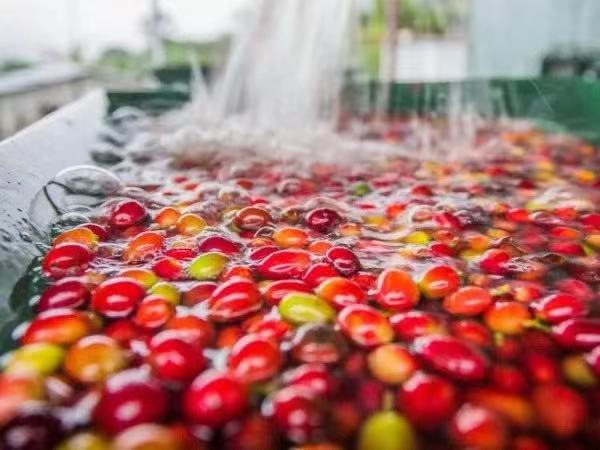
In the past, Blue Mountain coffee was only washed, but with the advance of boutique coffee, the Blue Mountain batch of sun treatment was first tried at Clifton Farm in 2019. Washing treatment: the harvested fruit must first be screened by bleaching water, remove the peel and pulp, let it ferment for 8-12 hours, and then put the fermented beans into the pool and pass them back and forth. Use the friction of beans and the power of running water to wash the coffee beans until smooth and clean. The washed raw coffee beans need to be dried until the water content is 12-14%. The dried raw coffee beans need to be strictly screened again, and finally packed and stored in the warehouse.
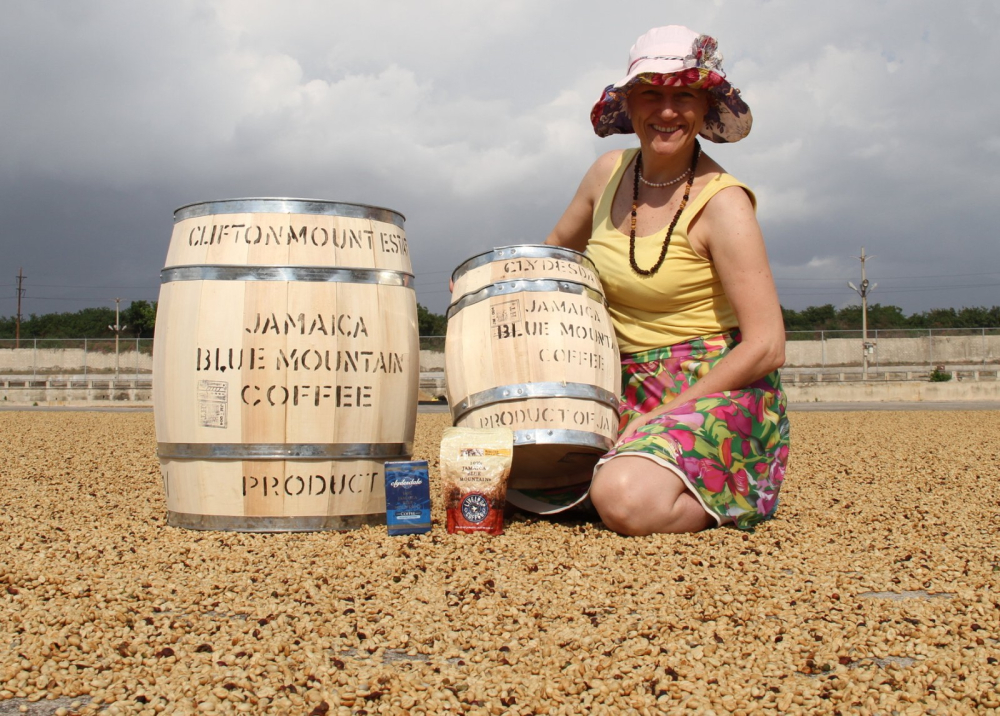
Although with the diversity of the coffee market, Blue Mountain Coffee tries to launch a small number of sun-cured coffee beans, but the blue mountain flavor treated with water is still the most classic representative. Qianjie believes that the washed Blue Mountain Coffee has a rich aroma, clean taste, sour, sweet and bitter balance, and can better represent the high quality boutique coffee of Jamaica.
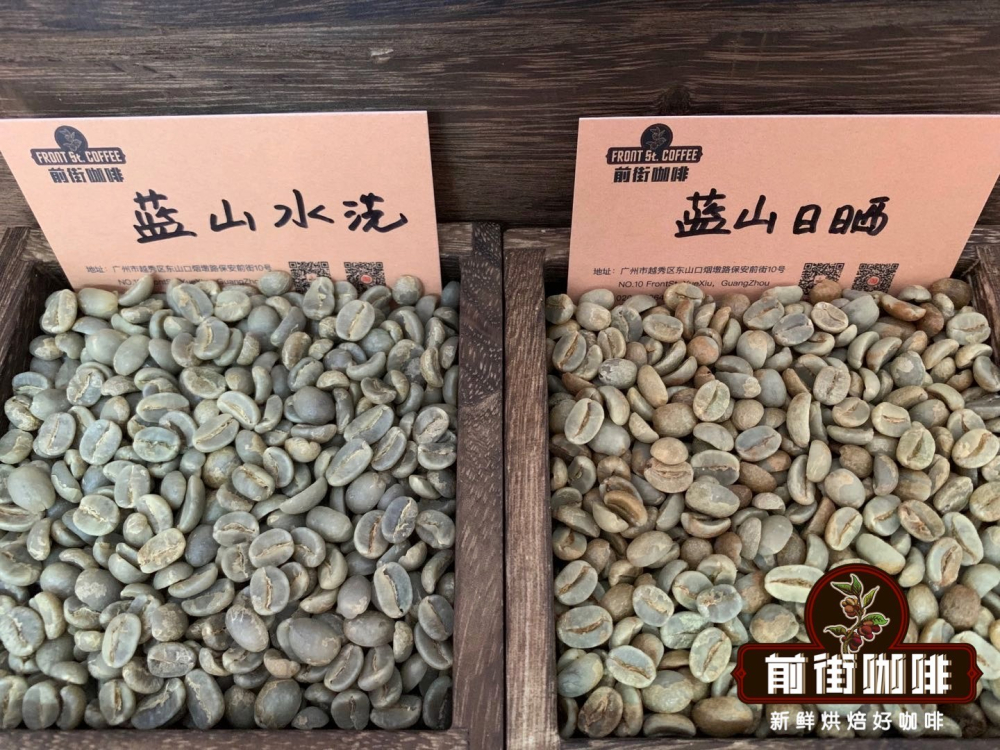
The front street coffee has sun-dried and washed blue mountain coffee.
Suggestions for making coffee in front of the street:
Some people may ask how can such an excellent coffee bean be flushed and boiled? In fact, for the brewing of coffee, Qianjie has always believed that the freshness of coffee beans is a very important link, the freshness of coffee beans can maximize the rich flavor of coffee. The coffee beans shipped in Qianjie are all roasted within 5 days, because Qianjie is well aware that the freshness of coffee beans has a great impact on the flavor. The purpose of Qianjie roasting is "freshly roasted coffee", so that every guest who places an order is the freshest coffee when he receives it. The bean cultivation period of coffee is about 4-7 days, so when the guest gets it, it is the time when the flavor is the best.
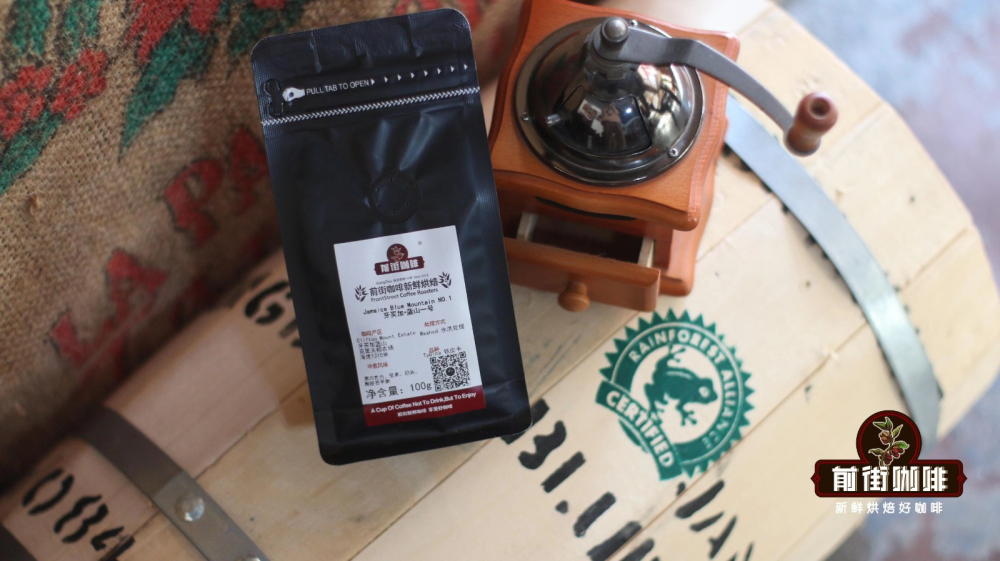
Of course, there are some customers who need help grinding powder in front of the street, which doesn't matter, but Qianjie has to warn: if the coffee beans are ground ahead of time, there is no need to raise the beans, because in the process of transportation, the pressure caused by carbon dioxide in the package can also make the coffee flavor mellow, so when you receive the coffee powder, you can immediately make a cup of coffee to drink. But the coffee powder needs to be brewed in time, because the coffee powder oxidizes more quickly after contact with the air, that is to say, the flavor of the coffee will dissipate more quickly, and the flavor of the coffee is not so good. Therefore, Qianjie suggests buying whole beans, grinding and flushing now, so that we can better taste the flavor of coffee.
Qianjie brewing Blue Mountain Coffee parameters:
Qianjie believes that the high-quality flavor of Blue Mountain coffee lies in the balance of sweet and sour, mellow thickness and full aroma. On baking, Qianjie chose medium-deep roasting, which can highlight the nutty and cocoa aromas of coffee beans. Better alcohol thickness can be obtained by using KONO filter cup.
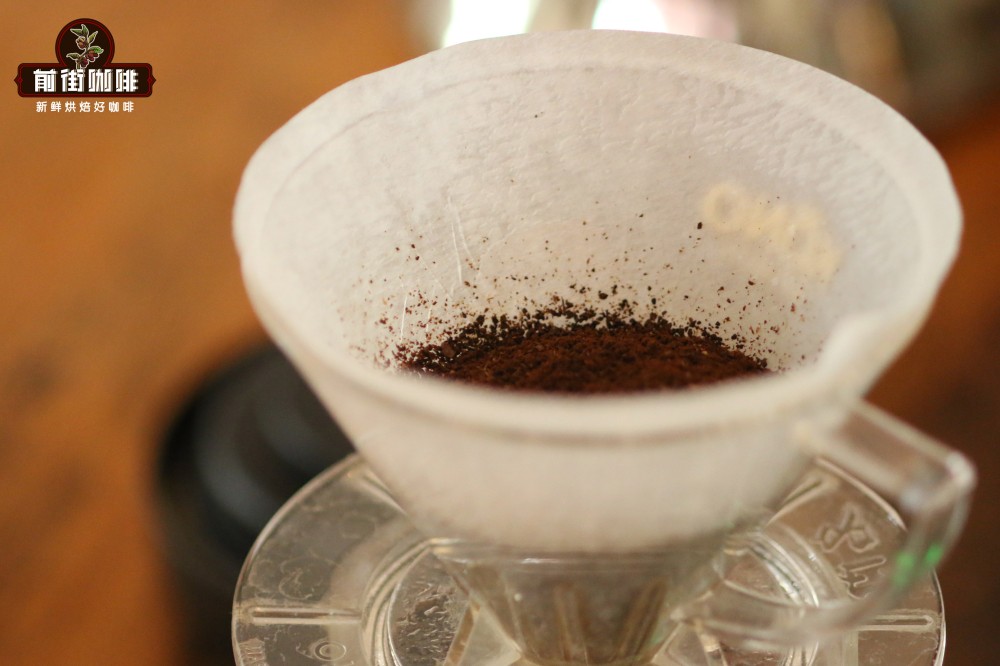
Now the KONO filter cup is moist, which can make the filter paper and coffee filter cup fit better. Put 15g coffee powder into the water in the sharing pot at the same time, steam with 30g water for 30s, then start injecting water around the center with small water flow for 30s, until 125g begins to segment, wait until the coffee powder layer drops to half the position of the filter cup and start to inject the second stage with the same method, until 225g, and then the filter cup can be removed after all the dripping is completed. From the beginning of water injection, the extraction time is 2: 39. Next, pick up the whole cup of coffee and shake it well, then pour it into the cup and taste it.
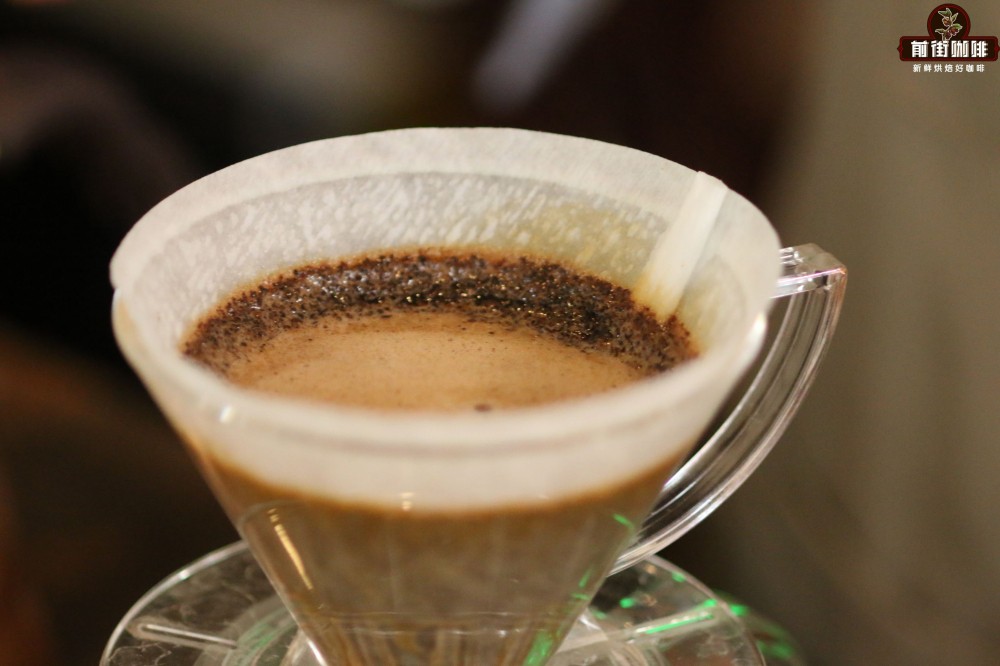
[front Street Sun Blue Mountain Coffee] slight acidity of berries, reminiscent of black plums and mulberries, with a good overall balance, dark chocolate and nutty flavors, with a slight sense of fermentation. [Qianjie washed Blue Mountain Coffee] dark chocolate, nutty flavor, creamy smooth taste, sweet and sour balance
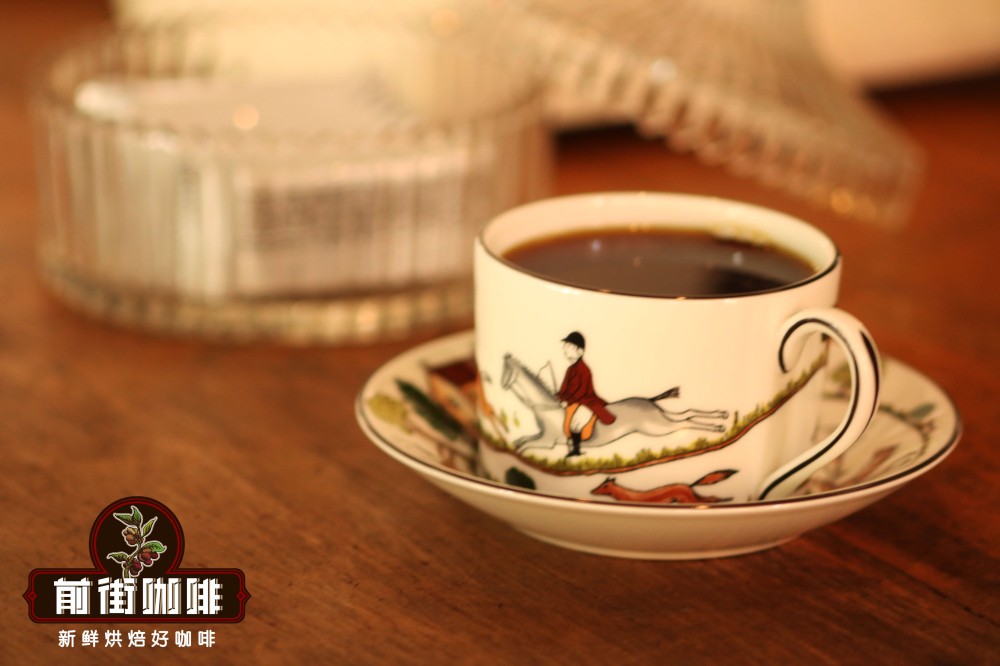
Blue Mountain Coffee has a balanced and smooth flavor, of course, not all people like to drink Blue Mountain Coffee. After all, everyone has different tastes. Qianjie rations beans are representative coffee beans from different countries, the performance-to-price ratio is very high, you can taste the coffee flavor of each country, so as to determine what kind of coffee you like. In this way, further selection of individual coffee from each producing area may be the best way for a novice.
Professional coffee knowledge exchange more coffee bean information please follow the coffee workshop (Wechat official account cafe_style)
For more boutique coffee beans, please add private Qianjie coffee on Wechat. WeChat account: qjcoffeex
Important Notice :
前街咖啡 FrontStreet Coffee has moved to new addredd:
FrontStreet Coffee Address: 315,Donghua East Road,GuangZhou
Tel:020 38364473
- Prev
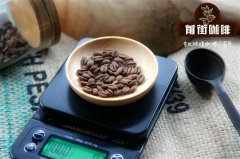
Introduction to the planting History of famous Coffee beans in Yemen the difference between Mayili coffee beans and mocha coffee beans in Yemen
Professional coffee knowledge exchange more coffee bean information please follow the coffee workshop (Wechat official account cafe_style) for lovers who dabble in coffee slightly, when it comes to Yemeni coffee, it is easy to associate it with Mocha. Yemen has a long history of growing coffee. By the early 17th century, Yemeni coffee beans began to be exported to Europe from the southwestern port of Mocha, and Europeans began to use them.
- Next
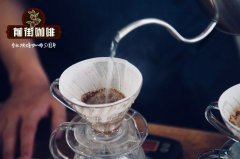
The hometown of coffee-Yemeni mocha mattari coffee is good? How many kinds of mocha Mocha coffee are there?
Professional coffee knowledge exchange more coffee bean information please follow the coffee workshop (Wechat official account cafe_style) coffee hometown-Yemen mocha mocha Mocha coffee refers to five kinds of mocha 1. The first export port of coffee-the Yemeni port of Moka (the vanished harbor) 2. Coffee brewed in a mocha pot. Italian latte with chocolate 4. The origin of coffee-Essex Obi
Related
- Detailed explanation of Jadeite planting Land in Panamanian Jadeite Manor introduction to the grading system of Jadeite competitive bidding, Red bid, Green bid and Rose Summer
- Story of Coffee planting in Brenka region of Costa Rica Stonehenge Manor anaerobic heavy honey treatment of flavor mouth
- What's on the barrel of Blue Mountain Coffee beans?
- Can American coffee also pull flowers? How to use hot American style to pull out a good-looking pattern?
- Can you make a cold extract with coffee beans? What is the right proportion for cold-extracted coffee formula?
- Indonesian PWN Gold Mandrine Coffee Origin Features Flavor How to Chong? Mandolin coffee is American.
- A brief introduction to the flavor characteristics of Brazilian yellow bourbon coffee beans
- What is the effect of different water quality on the flavor of cold-extracted coffee? What kind of water is best for brewing coffee?
- Why do you think of Rose Summer whenever you mention Panamanian coffee?
- Introduction to the characteristics of authentic blue mountain coffee bean producing areas? What is the CIB Coffee Authority in Jamaica?

